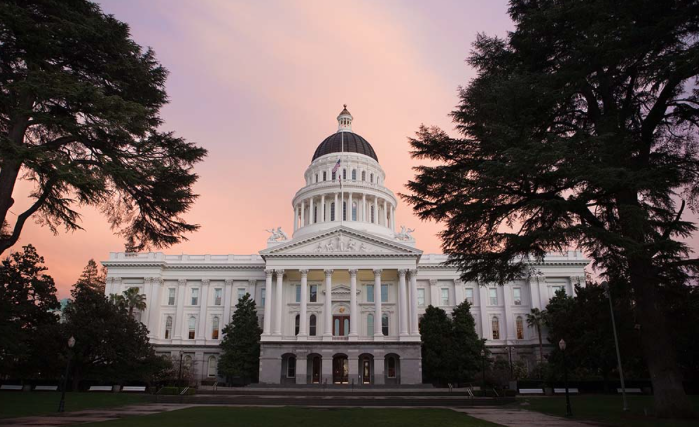CommentsCAPITAL & MAIN-This year, natural disasters across the country — including epochal drought conditions and devastating wildfires in California —
have thrown into sharp relief the urgent need for action on climate. Despite the urgency of the issue, proposed legislation in the state to address climate change has either been thwarted or diluted by the powerful fossil-fuel industry’s allies and lobbyists.
Overall, ten proposed bills that included environmental justice measures, industry accountability and emissions reduction programs never made it to a final chamber in the state Senate or Assembly in the face of opposition from the oil and gas industry. The lobbying was led by the Western States Petroleum Association and the California Independent Petroleum Association. Three other climate-related bills made it to a final chamber, one with significant changes that lessened its potential impact. Many of these bills were also opposed by business and labor groups, but the oil and gas industry was usually the most vocal.
Three bills in particular show how the industry still maintains a tight grip on climate policy in California — despite the state’s reputation for being at the forefront of efforts to reduce our use of fossil fuels. Two of them passed one chamber, only to get pulled before a floor vote in the second; one of them passed and now heads to Gov. Gavin Newsom’s desk but was significantly weakened.
The Climate Crisis Act Falls Short
The Climate Crisis Act (AB 1395) would have made it a legal obligation for the state to reach net zero carbon emissions by 2045, putting the force of law behind an executive order by former Gov. Brown. Crucially, it went beyond emissions reductions and introduced a regulatory framework for carbon capture and removal, pushing to the forefront a heated debate between environmentalists and the industry to shape how these technologies roll out in the coming years.
The oil and gas industry and the Building and Construction Trades Council labor group opposed the bill’s original mandate that polluters could rely only on carbon capture, a process in which emissions are trapped and stored underground as gas, for 10% of their emissions reductions. Assemblymember Al Muratsuchi (D-Los Angeles) removed it at the behest of Assemblymember Luz Rivera, the chair of the Assembly Natural Resources Committee, after the opponents raised concerns about the limit stifling technological innovation.
Limón’s bill originally called for raising the cap to $10 million; it was cut to just $5 million in the face of industry opposition. Both Democrat and Republican senators acknowledged earlier this summer that even the original amount was sorely insufficient to address the problem. The industry lobbied against the bill throughout the session, including after the bill’s authors made the cut.
On Sept. 8, the bill passed the Assembly, even as seven Democrats opposed or didn’t vote. A separate bill, authored by Sen. Melissa Hurtado (D-Fresno/Kern counties), directs the state to better account for idle wells and determine if their former operators can pay to plug them; it heads to the governor’s desk. Hurtado is seen by environmentalists as friendly to the industry, which didn’t oppose her bill.
Zero Emissions Vehicle Infrastructure for Low-Income Communities
Meeting Gov. Newsom’s executive order mandating 100% electric vehicle sales by 2035 requires building out charging and hydrogen refueling infrastructure across the state. One bill, SB 726, proposed that half the funds in the California Energy Commission’s Clean Transportation Program focus on low income communities.
The funds would be used to install charging stations for battery powered vehicles and refueling stations for hydrogen fuel cell cars near residential and multiunit dwellings in order to reduce both local pollution and emissions. But both the industry and hydrogen supporters opposed the bill unless it was amended to direct 30% of the program’s funds toward building hydrogen refueling stations for light and medium cars — despite the fact that more than 628,400 battery and hybrid cars are on the road in California compared to only 7,100 hydrogen fuel cell cars. As a result, there are currently far more stations for plug-in vehicles in the state than for hydrogen fuel cell cars.
Chevron, which lobbied against the bill, is a major investor in hydrogen fuel cell technology. Environmentalists point out that the industry isn’t similarly invested in battery-powered vehicles; earlier this year, WSPA launched a website casting doubt on the state’s vehicle electrification goals.
On Sept. 7, one of the bill’s co-authors, Assemblymember Eloise Gómez Reyes (D-San Bernardino), pulled the bill from consideration in her chamber. A press release from Reyes and co-author Sen. Lena Gonzalez (D-Los Angeles) said the legislation would be reintroduced next year; a policy director for CALSTART, which advocates for low emissions transportation, said proponents wanted more time to work on the bill.
(Aaron Miguel Cantú is an investigative reporter currently based in Los Angeles. This article was featured in CapitalandMain.com.) Prepped for CityWatch by Linda Abrams.














